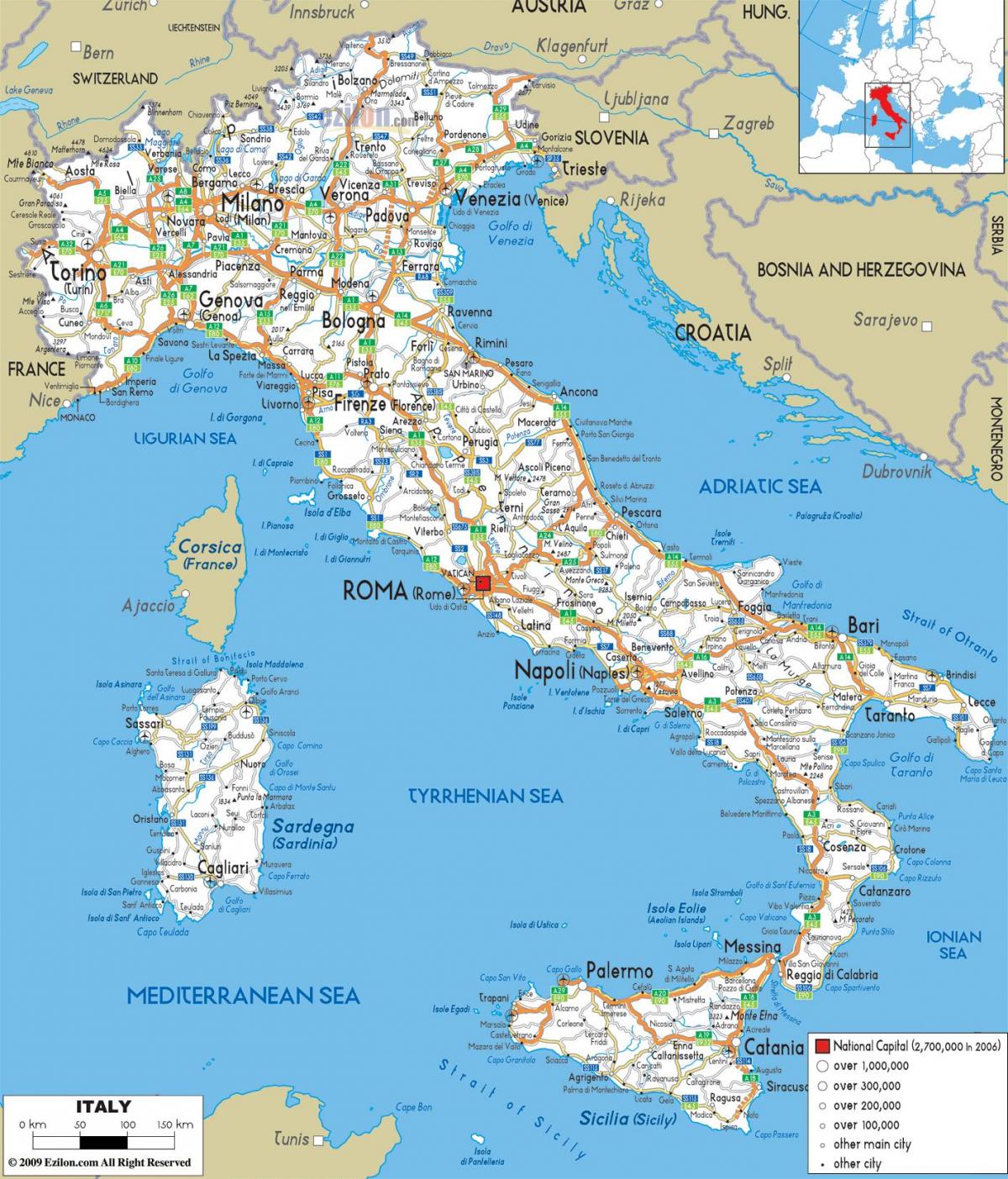search
Detailed map of Italy
Detail map of Italy. Detailed map of Italy (Southern Europe - Europe) to print. Detailed map of Italy (Southern Europe - Europe) to download. Italy is one of the European Union countries located bordered by the Mediterranean Sea. The country shares its land border with San Marino, France, Switzerland, Austria, and Slovenia. Italy's total area is 116,347 square miles of which 2784 square miles is water as its shown in the detailed map of Italy. The country has a total population of 66 million inhabitants, the third most populous country in the EU. Italy climate is highly diverse ranging from humid subtropical to humid continental with hot summer and harsh winter. The country experiences considerable seismic and volcanic activities since the country is at the meeting point of African and Eurasian Plates. The highest elevation in Italy is Monte Bianco at 15,782ft.
Italy has a highly developed retail system. Mass outlets in the form of supermarkets, malls, and multiple stores are becoming increasingly popular, and distribution is very well organized, particularly in the northern regions as its mentioned in the detailed map of Italy. The main chains are Standa, COOP, Esselunga, Sigma, and SPAR. Nevertheless, the retail sector is largely made up small, family-owned shops, and these remain the primary sales outlets for goods and services in the south. The shop-owners association, a very powerful lobbying group, was able to convince government to withhold licenses for supermarkets and malls for 2 years so that small shop owners could claim back some business.
Italian Lira (L). One lira equals 100 centesimi. There are coins of 5, 10, 20, 50, 100, 200, 500, and 1,000 lire. There are notes of 1,000, 2,000, 5,000, 10,000, 50,000, and 100,000 lire. The lira in Italy will be replaced in January 2002 by the euro, the new unified currency of the European Union (EU). One euro will be worth 1,936.27 lira at a fixed exchange rate. All lira coins and bills will disappear, and by June 2002 only euros will be in circulation as you can see in the detailed map of Italy.
The Italian Institute of Statistics assesses the class system using 6 different categories. The first is the bourgeoisie, which includes entrepreneurs employing a minimum of 6 people, self-employed professionals, and managers, and accounts for 10 percent of the working population as its shown in the detailed map of Italy. The white collar middle class covers employees engaged in non-manual jobs and makes up 17 percent of the working population. The urban petit bourgeoisie comprise 14 percent of the working population, defined as small entrepreneurs with a maximum of 6 employees, shopkeepers, and self-employed artisans.


